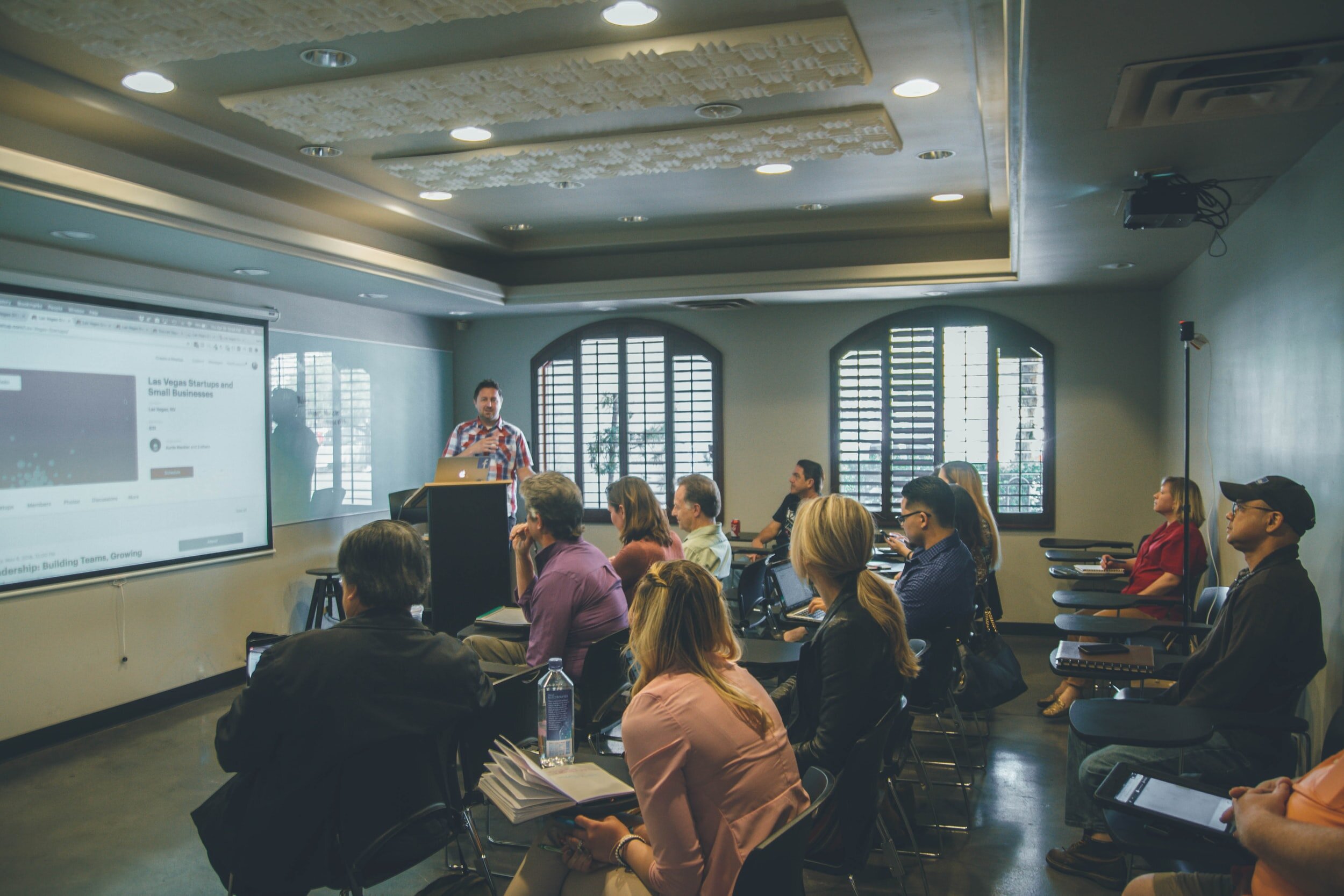Automated Video Analysis
By Dr. Emad Alghamdi
Dr. Alghamdi is an assistant professor of computational linguistics at King Abdulaziz University in Saudi Arabia. He is the director of the AILLA Lab, with research interests lie at the intersection of Applied Artificial Intelligence, Human-Computer Interactions (HCI), and Ethical AI. The project described in this post was awarded a Sage Concept Grant. Find him on Twitter @Emad_A_Alghamdi or LinkedIn: https://www.linkedin.com/in/emad-a-alghamdi/.

The Automated Video Analysis software (or AUVANA for short) is an open-source annotation tool for social scientists whose research involves analyzing and annotating videos. I developed the first version of AUVANA during my PhD. I remember searching for a tool that could help me annotate a large set of videos and analyze their content complexity, but I could not find a tool that is suitable for my research needs. So, I decided to develop my own and make it available to other researchers to use. Soon after I released the code, I received several emails from other researchers who wanted to use the tool for their research but found its functionalities limited. When I read a post on Twitter about Sage Concept Grant, I unhesitatingly applied, and my proposal thankfully got accepted. Rather than fixing the old tool, I decided to rebuild the tool from scratch. To help build the new tool, I reached out to some friends and developers from several online communities and explained to them the objectives of building AUVANA. Luckily, it did not take me long to convince three talented developers (Mishari, Abdulrahman, and Reem) to join me in this endeavor.
Before writing a single line of code, we reached out to potential users (researchers) and asked them how they currently analyze videos and what analyses and features their current tools lacked. We learned a lot from these interviews, and we were able to draw a roadmap for our tool. Then, we spent a considerable amount of time deciding what technology stack we should go with and how to design the user interface, so it is user-friendly and scalable. In the first version (1.00-Beta), we only included functionalities that are essential and yet do not take much time to implement. Another important engineering decision we made is to make our software functionalities extendable via plugins or addons (much like the R software). We envisioned that by developing an extendable platform other researchers and developers could join us to extend the tool's functionalities.
While there are many other alternatives, AUVANA is open-source software, and anyone can use or reuse its code in their projects. Secondly, it runs on the user's machine and stores their data in a local database, not in the cloud. Thirdly, it leverages cutting-edge AI technology to make video data annotation faster.
As we are now packaging our software and extensively testing it, it feels great that we could accomplish what we have done in a short period. It goes without saying, the path was not smooth, and we had moments of doubts and unclarity. Being all technical, we debated subtle things and sometimes rebuilt the same feature multiple times. We also implemented certain utilities, only to know later they do not work as we envisioned them. But we are glad now we have a working version, and we are excited to release it to the world soon at www.auvana.ai.
Have an idea? Apply for a Sage Concept Grant!

Sage’s Concept Grant program has been running since 2018 and aims to fund innovative software solutions that support research in the social sciences. We are seeking proposals for new technological solutions that support the adoption, development and application of established and emerging research methods, including quantitative, qualitative, mixed, and computational methods. We offer seed £2k grants to develop ideas and £15k grants for scaling prototypes. Explore previous winners. Apply for this year’s round and find out more here. Applications are open to anyone regardless of location or affiliation until 20th of June.
More Methodspace Posts about Data Analysis
Learn about options available in the dynamic landscape of emerging methodological extensions in the PLS-SEM field is the necessary condition analysis (NCA).
Methods Film Fest!
We can read what they write, but what do researchers say? What are they thinking about, what are they exploring, what insights do they share about methodologies, methods, and approaches? In 2023 Methodspace produced 32 videos, and you can find them all in this post!
Christina Silver explains why and how to use qualitative data analysis software to manage and analyze your notes, literature, materials, and data. Sign up for her upcoming (free) symposium!
Use research cases as the basis for individual or team activities that build skills.
How do you find gems in a research project when the data is too thin for generalizations? In this post researchers discuss creative ways to learn from (and write about) the experience.
The focus for Q3 of 2023 was on analyzing and interpreting qualitative and quantitative data. Find all the posts, interviews, and resources here!
Dr. Stephen Gorard defines and explains randomness in a research context.
Mentor in Residence Stephen Gorard explains how researchers can think about predicting results.
The Career and Technical Education (CTE) Equity Framework approach draws high-level insights from this body of work to inform equity in data analysis that can apply to groups of people who may face systemic barriers to CTE participation. Learn more in this two-part post!
The Career and Technical Education (CTE) Equity Framework approach draws high-level insights from this body of work to inform equity in data analysis that can apply to groups of people who may face systemic barriers to CTE participation. This is part 2, find the link to part 1 and previous posts about the Equity Framework.
Instructional tips for teaching quantitative data analysis.
In an era of rampant misinformation and disinformation, what research can you trust? Dr. Stephen Gorard offers guidance!
Learn how inductive and deductive styles of reasoning are used to interpret qualitative research findings.
Images contain information absent in text, and this extra information presents opportunities and challenges. It is an opportunity because one image can document variables with which text sources (newspaper articles, speeches or legislative documents) struggle or on datasets too large to feasibly code manually. Learn how to overcome the challenges.
Tips for dealing with missing data from Dr. Stephen Gorard, author of How to Make Sense of Statistics.
Learn more about standard deviation from a paper and presentation from Dr. Stephen Gorard.
Video capture is ubiquitous. What does it mean for researchers, and how can we analyze such data?
Qualitative data analysis varies by methodology. Learn about approaches for phenomenological studies through this collection of open access articles.
Learn about qualitative data analysis approaches for narrative and diary research in these open access articles.
Ethnography involves the production of highly detailed accounts of how people in a social setting lead their lives, based on systematic and long-term observation of, and discussion with, those within the setting.
Qualitative data analysis varies by methodology. Discover diverse ways to analyze data for grounded theory studies in these open access articles.
Qualitative data analysis varies by methodology. Learn about approaches for action research in these open access articles.
How can you study digital culture and activism? Watch this interview with Dr. Lyndon Wray.
Look at the choices of video methods made by authors of four research articles.
This collection of open-access articles includes qualitative examples of analysis strategies to use with multimedia video data.
This collection of open-access articles includes quantitative examples of analysis for video data.
How do we understand and interpret visual or video data? See these open-access articles for ideas and examples.
Find a collection of open-access articles about analyzing and interpreting photos generated by participants using photovoice mmethods.




























Looking back at 2023, find all posts here!
We explored stages of a research project, from concept to publication. In each quarter we focused on one part of the process. In this recap for the year you will find original guest posts, interviews, curated collections of open-access resources, recordings from webinars or roundtable discussions, and instructional resources.